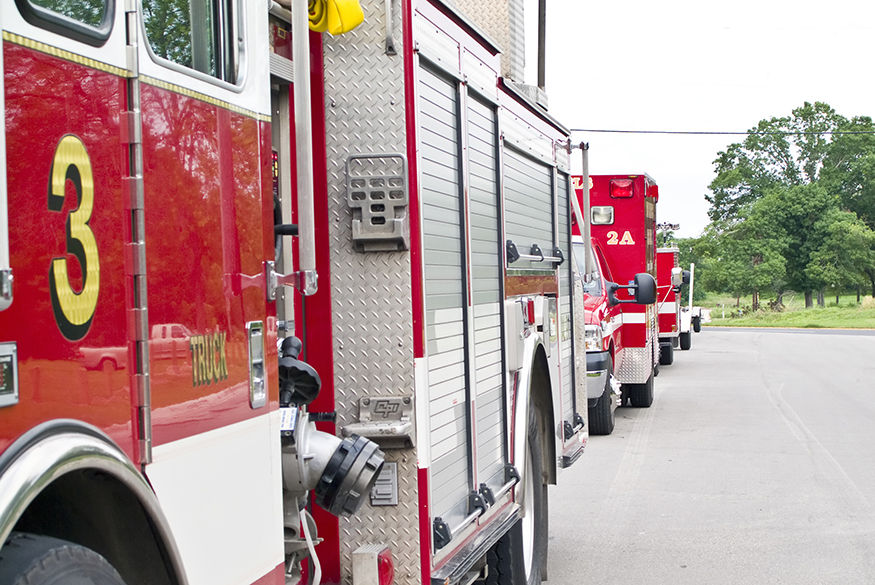Prepared to Be Prepared
By Alex Bruce, Highwoods Properties
Are you prepared to deal with an emergency situation at your building? Are you familiar with the facility’s emergency plan? How would you react, and how would you deal with the safety and preservation of the occupants of the building?
The building engineer should have a connection with a building and have an innate sense of responsibility for the people inside it. A great example of this sense of duty was during US Airways flight 1549. On Jan. 15, 2009, US Airways flight 1549 was forced to make an emergency water landing on the Hudson River after a flock of birds caused both engines to fail. The pilot, Captain Chelsey “Sully” Sullenberger, and first officer, Jeffrey Skiles, were able to guide the plane and its 155 passengers and crew to safety.
This type of engine failure was unprecedented at the time, and there was no available training for an emergency situation of this nature. The captain, much like the building engineer, had working knowledge of the airplane. That knowledge allowed him to make immediate decisions and know what equipment to implement to help keep the people safe. The building engineer should have that same working knowledge of the building to execute a similar response.
The captain was the last person out of the plane, and his main concern over anything else was verifying the passenger count. The safety of his passengers and crew was paramount. Having an idea of how many people are in your building will help you determine where you could accommodate everyone if you had to evacuate the building.
Knowing where the emergency assembly areas are outside of the building and approximately how many people occupy the building will determine if a group was unable to exit the building. This insight can direct emergency responders in the right direction in the case of an entrapment.
What about the kind of emergency that has become all too common in our daily news headlines?
Civil unrest has become a harsh part of our existence and could have lasting implications on property management and the building. In Atlanta, we have many commercial buildings that house foreign government consulates. As a result, these buildings can be subject to protests and the possibility of an attack. Some research companies have experienced events of civil disobedience while protesters demonstrated outside their buildings—a right they are free to exercise.
Several different scenarios can ensue during protest situations, including fires being started and /or riot patrol officers releasing an airborne deterrent to contain the disturbance. It would be very beneficial to provide training to all of the building personnel on how to isolate the outside air intake and the exhaust air fans to eliminate the potential for the airborne offensive odors from entering the building. The smell of smoke inside of the building could have an adverse effect on its occupants and could cause a panic. In order to get people in and out of the building in this situation, it is recommended to establish an air lock method of entry and exit by utilizing the double sets of doors to the building lobby if possible. You could use an entire room to isolate the outside from the buildings core. Shutting down all of the elevators except for one will keep the elevators from pulling in the smoke through the shafts, further minimizing the infiltration to the building.
In many of these events, objects are thrown from the crowd which breaks glass and causes other damage. Securing the opening becomes an emergency all in itself. Establishing a barrier between the occupants and the disruptive environment outside is something we all need to be prepared to do. Having a pre-fabricated device that installs quickly over the opening was something that worked very well in South Florida as engineers are no strangers to glass breakage, primarily due to inclement weather events.
As in any emergency condition, communication is going to be your best tool for success. After having established the emergency command center and appointing a commander, be sure the radio codes are known and who is assigned to each radio number. In some cases, the land lines and cellphones will not work due to heavy line traffic or emergency services taking over priority use of the service. In the event phone service is unavailable, your only tool for communication will be your handheld radio. Every two-way radio transmission is crucial during an emergency situation, and that same radio we take for granted every day may keep you safe or save a life.
If you know in advance there may be a demonstration or a peaceful protest in your area, it would be a good idea to establish a line of demarcation by the use of barricades. Blocking off entrances to the parking garages and other common areas will let the protesters or demonstrators visibly see the blocked area is not to be accessed, and that it would be a trespassing violation if that area were breached.
What if you had a situation that originated from within your building? The Atlanta market is home to headquarters for public officials that are under constant threat from extremists. As engineers that work in these buildings, it is imperative to be prepared for anything. There are many ways a building can be compromised internally, for example, through the mail room. It was not long ago when commercial office buildings ran the risk of the possibility of anthrax or a letter bomb being delivered to the mail center.
By knowing the location of the mail rooms and the specific mail carrier is one way to help safeguard the building. It’s recommended to note any change in the condition of the mail rooms and changes in mail room personnel. Report any suspicious package that appears to be out of place or has no markings to the appropriate authorities. In the event of a hazardous substance release, it would be a priority to shut down the buildings HVAC systems to keep any of the airborne particulate matter from being circulated through the ventilation system and spreading the possible contaminate. Having appropriate supplies and materials that you could use to isolate the area such as tarps or roll plastic and good strong tape will help minimize the circulation of the substance.
Having a plan to deal with situations of civil unrest is critical in today’s world. The plan should be reviewed by everyone in the building that shares a responsibility for the safety and preservation of the occupants within the building. Having regular meetings with the security team and all personnel that may be called upon during a time of crisis is a great way to perpetuate continual awareness of the potential for such an event as it seems to be regular headline news these days. Allow these shared lessons to help either strengthen your current efforts or begin to formulate the building blocks needed so you are prepared to be prepared.
ABOUT THE AUTHOR
Alex Bruce, senior HVAC technician for Highwoods Properties, joined the team in the beginning of 2015 and has operated properties in the Alpharetta, Sandy Springs and Buckhead markets. As a 25-year veteran of the mechanical HVAC industry, Bruce has an extensive background in project management, commissioning and aviation. He is also a LEED Green Associate and a licensed aircraft pilot.









